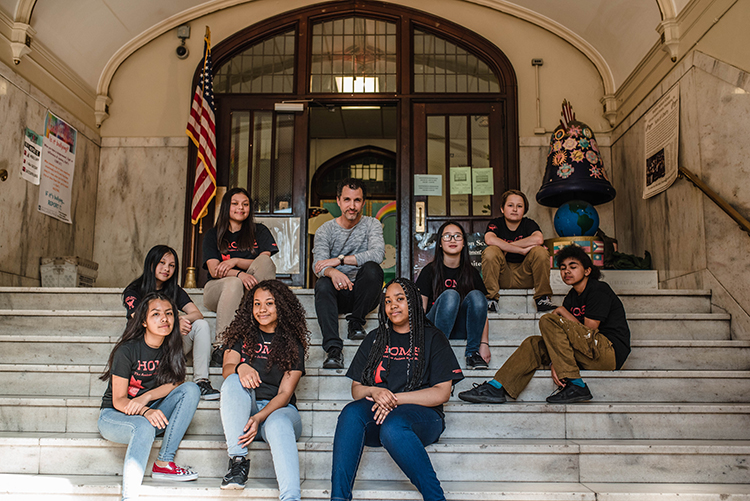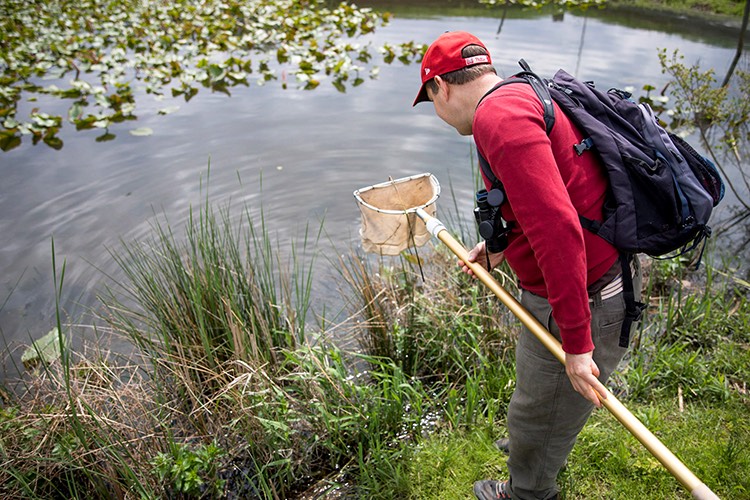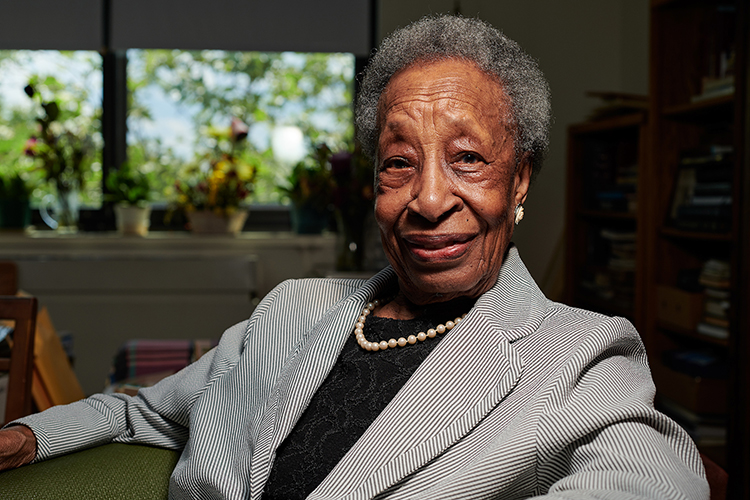Photo by Tammy Bradshaw
By Steve Neumann
Chris argerakis, a music teacher now in his 11th year at Andrew Jackson Elementary School in South Philly, remembers how desperately his program needed money when he began teaching at the start of the 2007 financial crisis. To raise funds, he resorted to cold calling local businesses within a four-block radius of the school to see if they could help.
“It was agonizing then,” he says. “I really cringe now when I think of what I had to do to get by the first year.”
Eventually, Argerakis looked for alternative forms of funding and discovered a resource online called Donors Choose. At least two-thirds of the equipment in his classroom was acquired through the site, because he posted there almost nonstop for about five years.
His persistence ultimately paid off. He was the subject of a short film called HOME: A Rockumentary that aired on WHYY last fall. It’s the story of how he built a music program from nothing and ended up earning ovations at The Trocadero Theatre and large audiences all over the city.
“I’m lucky,” Argerakis says. “In the last seven years, the HOME band has been out and performing—it’s much easier to raise money when you’re in front of 10,000 people in the course of a year.”
Community Contributions
Louis Scaglione, president and music director of the Philadelphia Youth Orchestra, knows that scenario well. He’s been a key figure in music education in Philadelphia for the past 25 years, though he started his career in Chicago.
“When I was a very young teacher just starting in the Chicago public school district, music was cut in 1988,” he says. “Philadelphia followed suit not too long after that.”
But utilizing community partnerships early on, Scaglione says, the Philadelphia School District was able to sustain what it had while it developed a system to obtain the additional resources.
Take the All City Orchestra program for one. About 15 years ago it was floundering, so Philadelphia Youth Orchestra—along with a few other community partners like the Philadelphia Orchestra—helped save the program.
“It was mostly support of time and human resources,” Scaglione says. “Where the district couldn’t pay for certain things, we stepped in.”
Scaglione’s Philadelphia Youth Orchestra is now part of a cohort called the Philadelphia Music Alliance for Youth. Created in 2012, PMAY is a group of 10 organizations, including the Philadelphia School District, dedi-cated to providing music education, performance and enrichment opportunities to the city’s youth.
Two years ago the group was invited by the Andrew W. Mellon Foundation to submit a proposal to diversify the professional orchestra field.
“They challenged us to come up with a program,” Scaglione says, “that would identify students from certain demographics and racial backgrounds and resource them earlier on, so by the time they got to be a senior in high school they have been prepared to successfully audition to a college or conservatory at their peer level.”
That program is called the PMAY Artists’ Initiative, and it was approved to the tune of $2.5 million. It’s been so successful that other urban centers around the country are trying to replicate it.
“The right model,” Scaglione says, “is for students to have healthy in-school music programming with community organizations supporting, supplementing and expanding the opportunities for those students who have real interest in prioritizing music in their lives.”
What Scaglione envisions is akin to a concerto, where the school district is the solo instrument and the community is the supporting orchestra. Fortunately for Scaglione, Philadelphia is almost there.
“That change really has happened within the last five years,” Scaglione says, “due to the good work of Frank Machos.”
Where the School District Steps In
Frank Machos is the executive director of arts and academic enrichment for the School District of Philadelphia. A product of central New Jersey, he arrived in Philadelphia in 1998 to attend the University of the Arts. After getting his master’s in music education, he began teaching at Grover Washington Jr. Middle School in the Olney section of the city.
“I saw a lot of things missing in music education as it existed at that point,” Machos says. “So I built my programs around preparing kids to work as professional musicians, using a lot of contemporary music in the classroom and a lot about the music business and recording production technology.”
After five years at Grover Washington, Machos had the opportunity to take his model to School of the Future in West Philadelphia, where it quickly became successful. After finishing an educational leadership program at the University of Pennsylvania in 2013, he was offered the position of director of music education there. He would spend the next three years in that role before the chief academic officer made the decision to reopen a dedicated Office of the Arts as part of an internal reorganization, and asked Machos to be its executive director.
“When I inherited the music office,” Machos says, “my operating budget to support 220 schools at the time was $50,000 a year.”
But Machos notes that even at its low point in 2013, the district as a whole was still spending approximately $50 million a year on music, visual arts, dance and theater. That made the district the third largest spending arts organization in the city, behind the Philadelphia Museum of Art and the University of the Arts, which spend $100 million and $80 million per year, respectively.
“That said, we’re still not serving all of our kids,” Machos says. “We still don’t have 100 percent access to arts and music, and where we do have access, it’s not necessarily as well-rounded as we want.”
But the numbers have been trending in a positive direction. Going into the end of last year, nearly 94 percent of district schools had at least one qualified arts educator, and the overall percentage of access to the arts was approximately 95 percent.
“Every elementary school has access to instrumental music,” Machos adds, “because there’s an itinerant music teacher in every K-5 school, and that’s a stat we’re super proud of. It’s been nearly 30 years since we’ve been able to say that.”
The district also invested $2 million in arts education in the last year from their internal budget, with $1 million going to upgrade music equipment and instruments and $1 million toward visual arts supplies.
In addition to shoring up the traditional music curriculum, this year the district will also have between 15 and 20 high schools with recording-studio programs, song writing curricula and rock bands.&nbs
p;
All these changes come in the wake of a school district study called the “Arts & Creativity Framework” announced last fall. The framework—the first of its kind in over a decade—mapped out who the district’s arts partners were, as well as the assets of those organizations, in order to create a comprehensive plan for arts education access across the district.
Though the district will be starting with K-5, the framework calls for a redesign of all curricula, and it leaves plenty of room for teacher autonomy. The next step is to send the framework out to every teacher, elicit their feedback, then hand it back to them to implement as they see fit.
In addition to getting their chairs in order internally, the district has secured outside funding to bring music industry experts in to craft what would go into four major elements of the music entertainment industry—music business, songwriting, recording and production and modern band.
“Meek Mill just visited our school,” Machos says.
The district has also partnered with DASH—Destined to Achieve Successful Heights—an organization created by music executives who have worked with artists like Mariah Carey, Kanye West and Jay-Z.
“We’re collaborating with a lot of them now to look at what we’re missing,” he says.
Of paramount importance is making sure that high school students are thinking about these things while they’re still in school, and to make sure that the talent scouts, managers and booking agents are finding younger talent coming up through the ranks.
On the Up and Up
Though the state of music education in Philadelphia has been on a favorable trajectory since its 2013 nadir, there are still some rough patches that need to be smoothed out.
One is that the demand for contemporary, popular and technology-based recording programs is exceeding the district’s capacity to fill with qualified experienced teachers. Another is making sure the curriculum is based on cultural relevance and responsiveness.
“We’re really looking at meeting the cultures of our kids,” Machos says. “Like in our North Philadelphia schools like Edison High where there’s a concentration of Latino students playing salsa, merengue and bachata. These are things that are not part of the music education training currently in our country—or part of the experience our new hires have.”
Because of this, the district has been talking to its partners in higher education, like Temple University, to upgrade their curricula so that new hires coming out of college have a more varied and representative cultural experience. And since the district is investing in 15 to 20 recording studios, they need to think about how to train the existing teachers to use them and identify industry professionals to bring in to help.
“We’re looking at how we build the infrastructure for the classroom music experience,” Machos says, “so that every student coming through Philadelphia has at least some exposure and experience with playing all of the instruments, and by fourth or fifth grade, where we really start bringing kids into the orchestra, they’re able to say, ‘I’m not trying an instrument, I’m now committed to playing an instrument.’ ”







